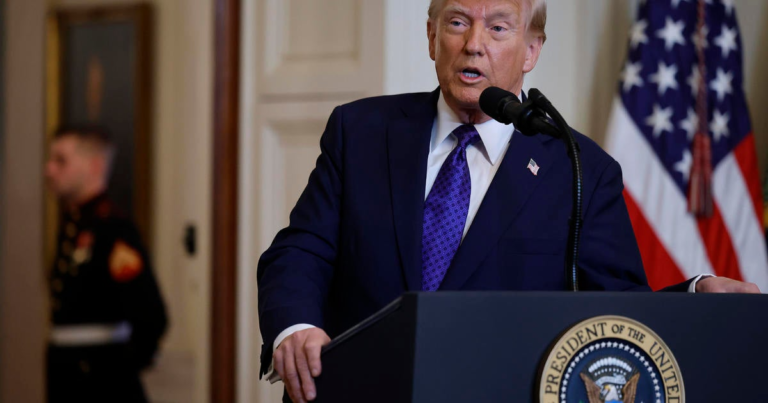In a dramatic stance on global trade, former U. S. President Donald Trump halted for one month the application of tariffs on Mexico and Canada. This move has already stirred conversations among businesses, politicians, and the general public as these tariffs have been a matter of dispute in North America for a long time. This article looks into the rationale for this pause and how it could affect various sectors and the economy.
History: Tariffs on US Trading Partners
As part of one of his trade strategies, Trump imposed tariffs on steel, aluminum, and other products from Mexico and Canada, intended to shield the American economy from competition and correct trade deficits. These tariffs caused both countries to increase their corresponding tariffs which strained trade relations and forced both parties into negotiations.
The tariffs were particularly impactful on industries such as automotive manufacturing, agriculture, and construction, which depend on a cross-border supply chain. While these tariffs have been waived, timelines and other trade policies remain uncertain.
Reasons Why Trump Agreed to a Paused Tariff
There are several reasons why Trump decided to place a pause on the tariffs that were imposed on Mexico and Canada.
Influencing Factors from the Business Community
- Implementors of the tariffs, especially in arms of the agriculture and construction sectors, had costs of active trade greatly increased.
- Altering spending along supply chains, and looking for alternatives options raised questions on competitiveness.
Economical and Political Issues
- The trade war with China was already bleeding the American economy and further strains with North American partners could lead to a catastrophe.
- With elections around the corner, it is likely that Trump was minding the economic cost of the tariffs on the important voter base.
Negotiations
- Mexico and Canada sought for the tariffs to be lifted during the trade negotiations in exchange of the cooperation under the USMCA.
- This pause could be considered to improve diplomatic relations and provide an opportunity to negotiate further.
Effects on Significant Sectors
Automotive Industry
The automobile sector is among the most affected by cross-border supply chain manufacturing busninesses, which brings in components and equipment from Canada and Mexico for assembly. With these tariffs on pause, Ford, General Motors, and Toyota can look forward to smoothening the supply chains.
Agricultural Sector
Farmers from the United States have been the most affected by inflows of lesser priced Mexico and Canada agricultural products. The pause allows American farmers to operate without bottlenecks, further aiding trade.
Construction and Manufacturing
The construction sector suffered due to the increases in steel and aluminum tariffs, which affected everything from infrastructure projects to real estate development. The temporary suspension is a time where builders and manufacturers who use these materials are getting some rest.
What This Means for Consumers
Consumers, in one way or another, are affected through the indirect increases on goods due to the tariffs. The pause can provide:
- Benefits in the form of decreased prices for imported products and those that depend on foreign supply chains.
- Certain goods that were affected by trade barriers becoming more accessible.
- Businesses being more confident in trade agreements resulting in economic growth.
Future of U.S. Trade Policies
This one-month pause does not offer a solution for the long-term and can just be considered a band-aid. In the long run, the U.S. might:
- Re-negotiate Mexico and Canada terms regarding tariffs for some time.
- Invoke tariffs again if specific economic aims are not achieved.
- Place more attention on other trade deals in the pipeline like with China and the EU.
Conclusion
Trump deciding to halt tariffs on Mexico and Canada is a notable turn in North America trade relations. It eases the pressure on businesses and consumers in the short-term, but the long-term consequences are still murky as to what the policies would be. The result rests upon how effective diplomats, the economy, and politics will turn out.
At this moment, sectors dependent on foreign commerce can relax a bit, but they need to be on guard for any prospective policy changes. Further developments regarding U.S. trade interactions will decide if this moment of rest transitions into economic equilibrium in the long run, or simply postpones eventual conflict.
